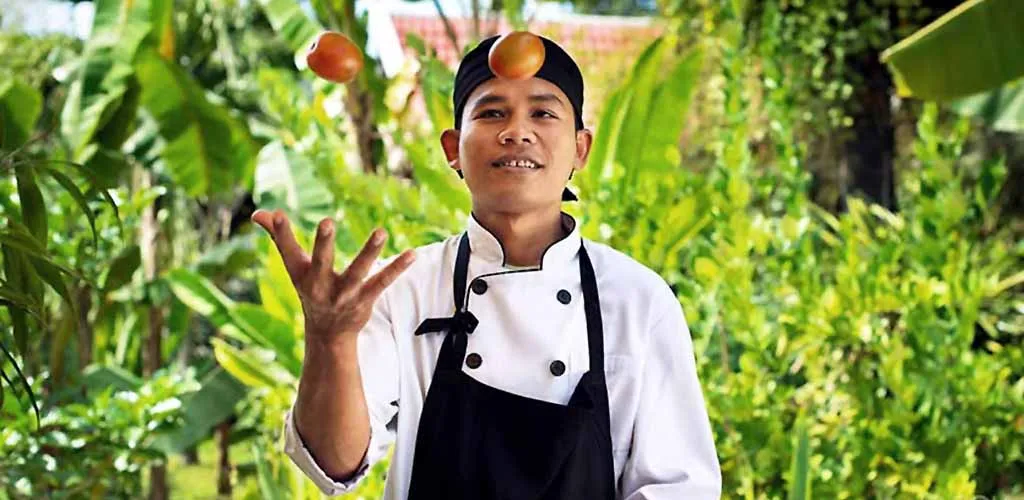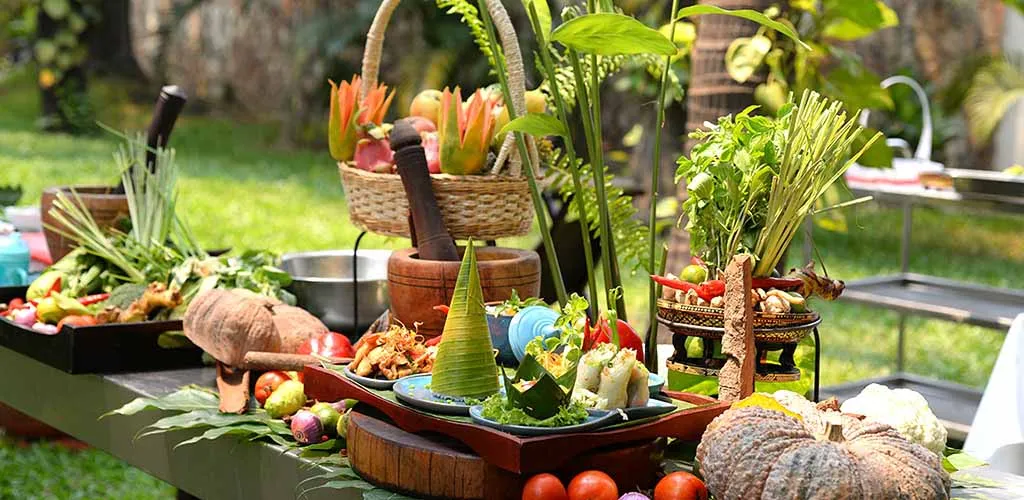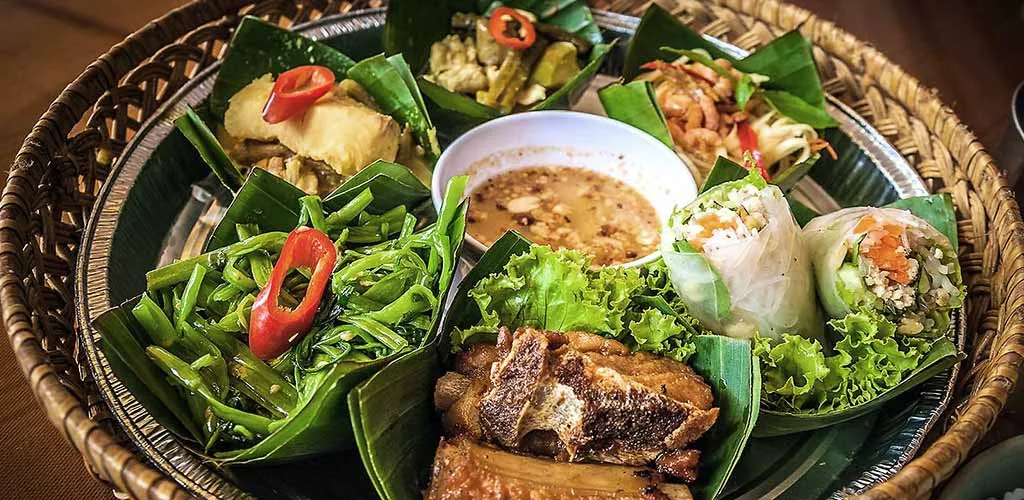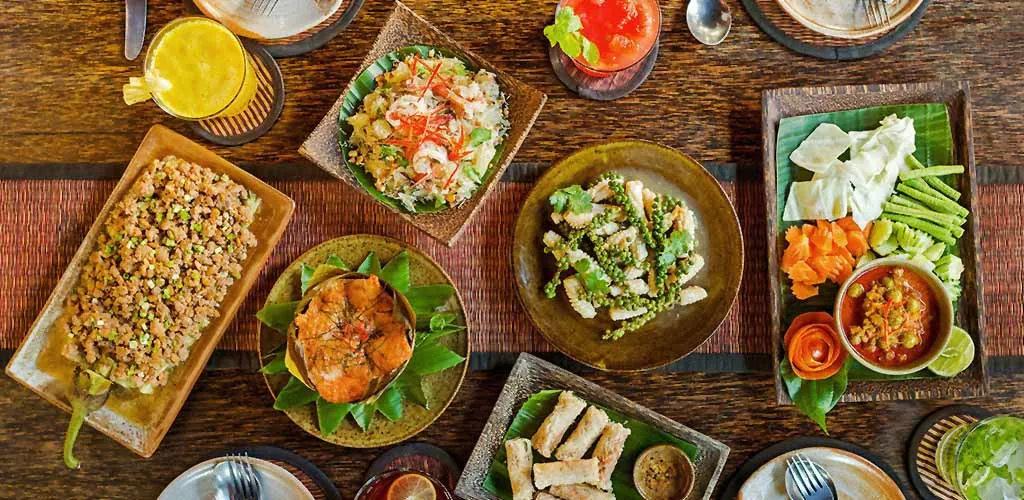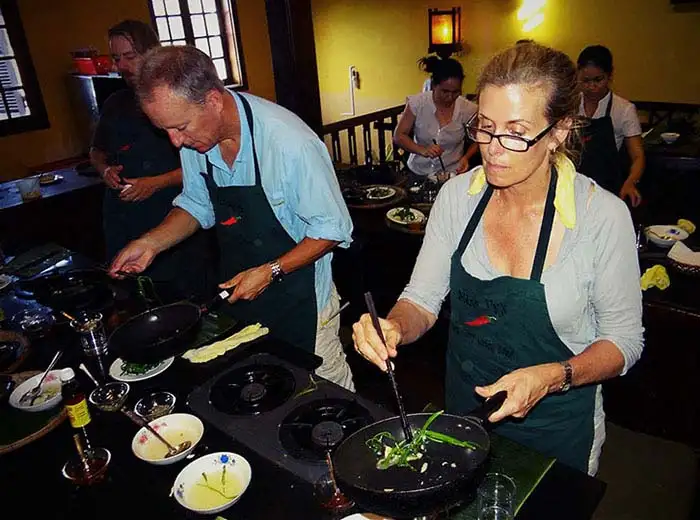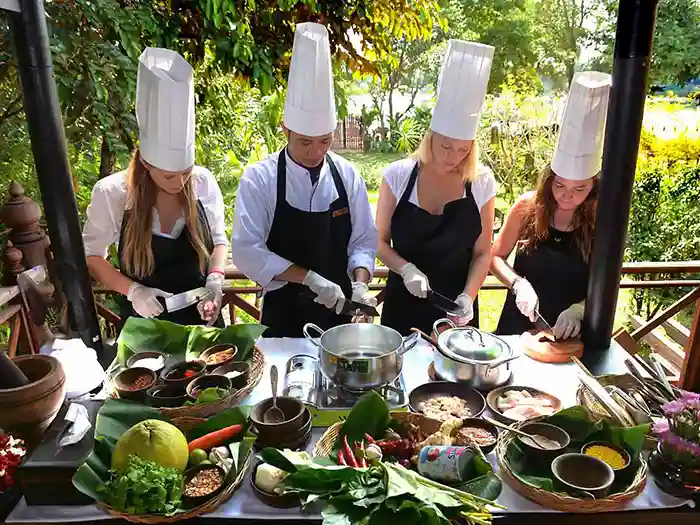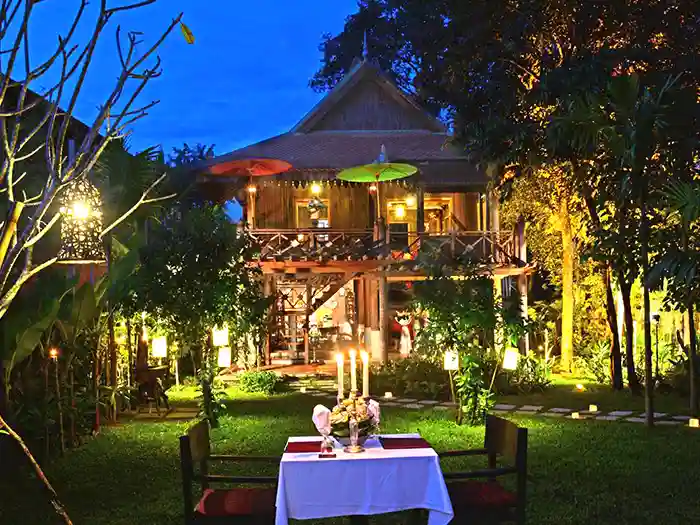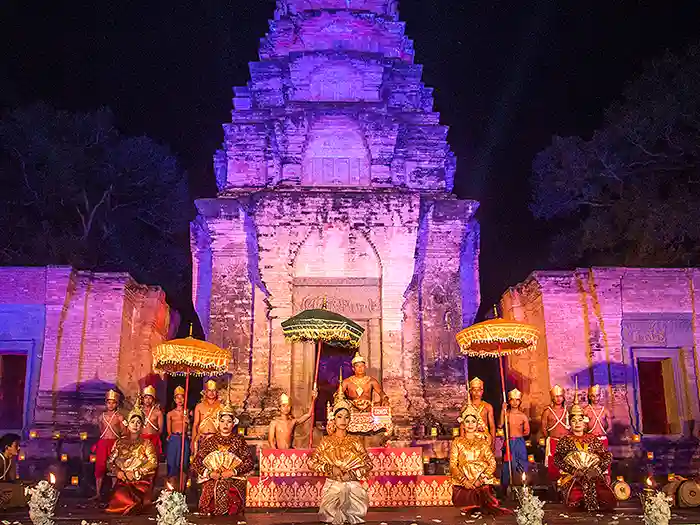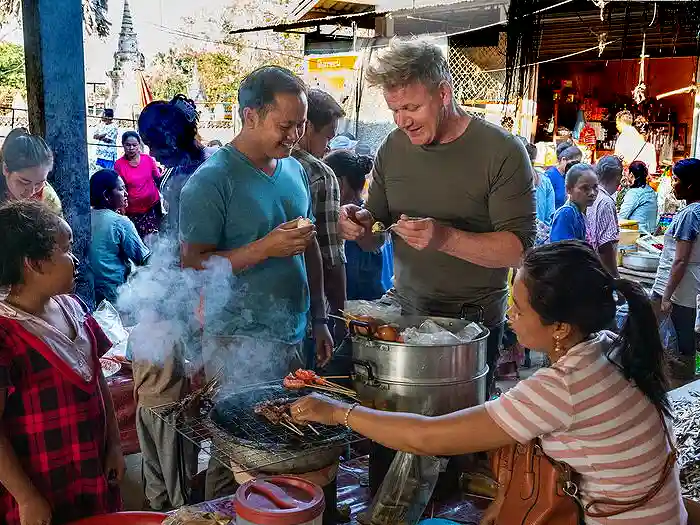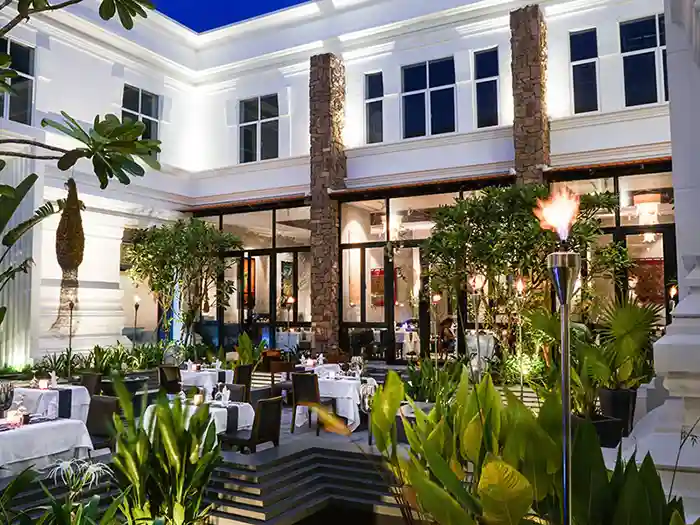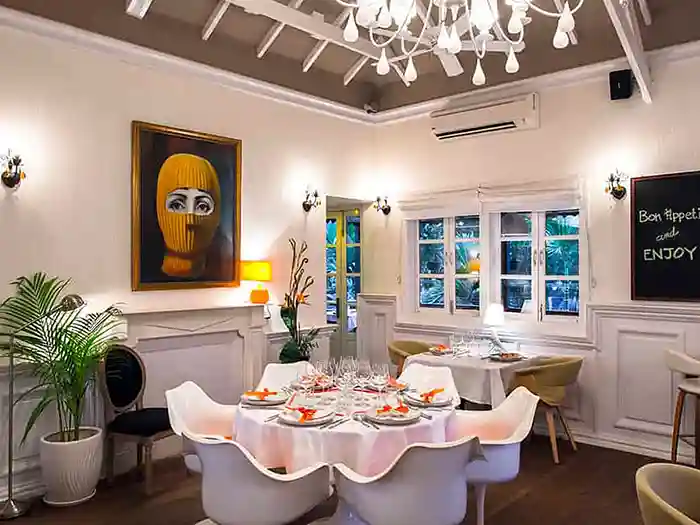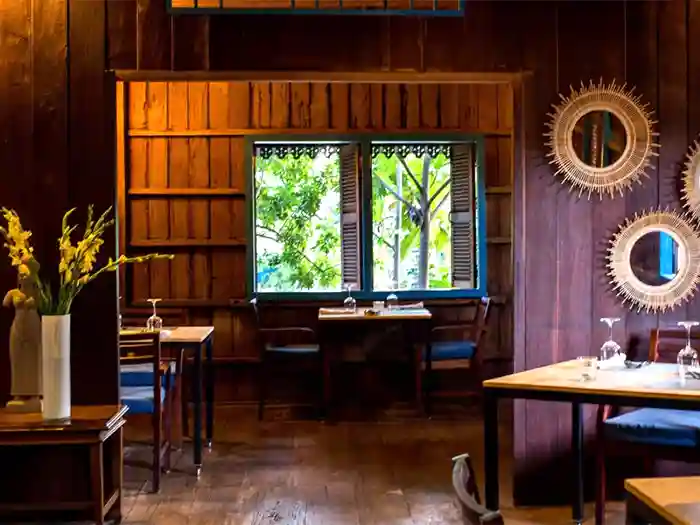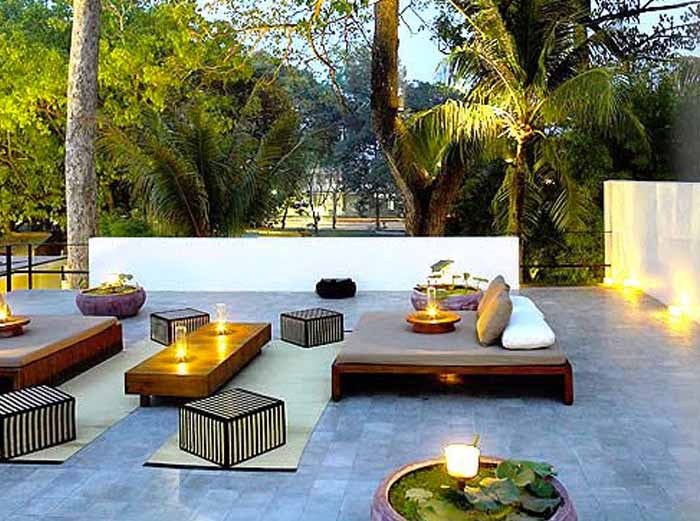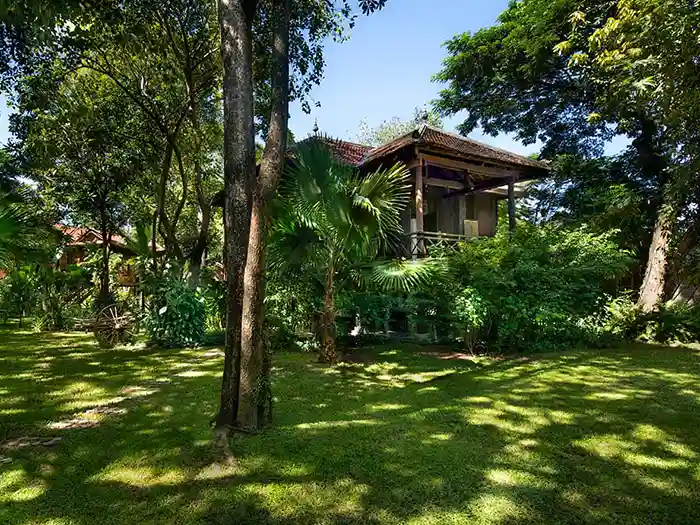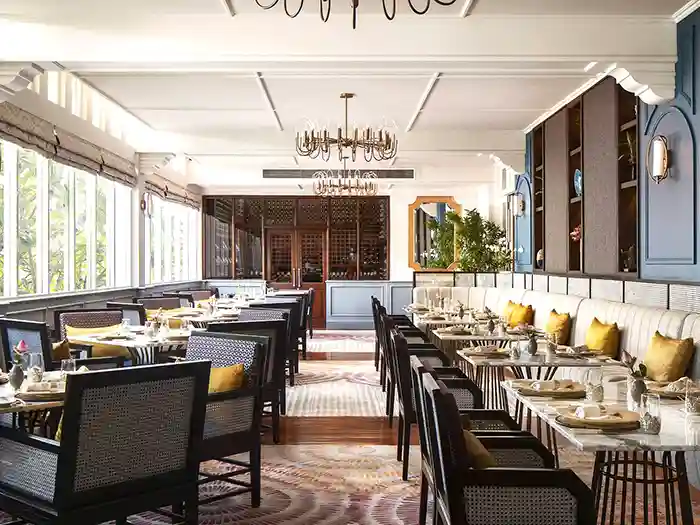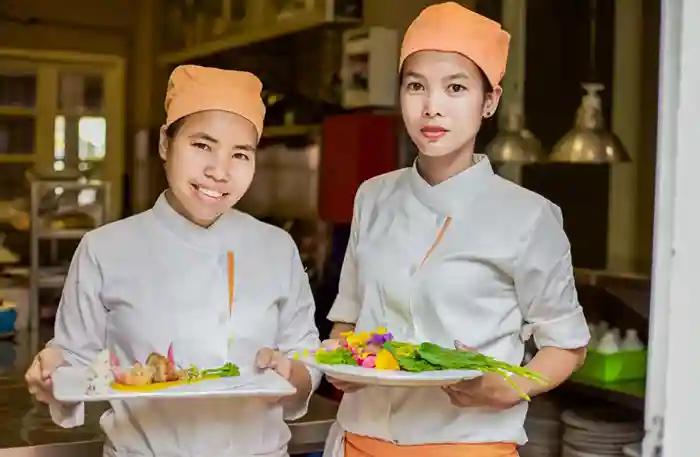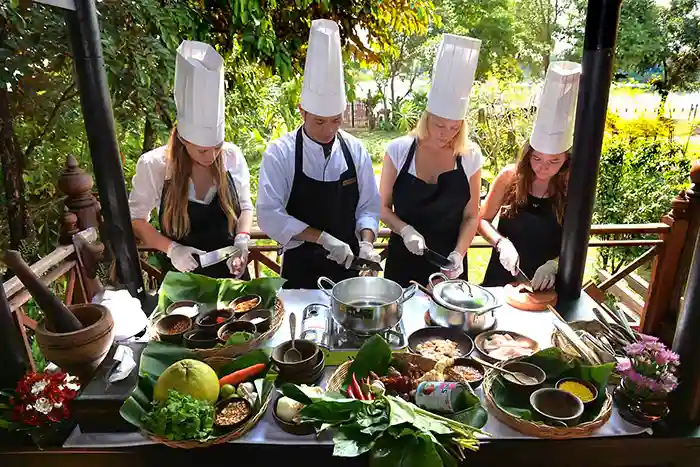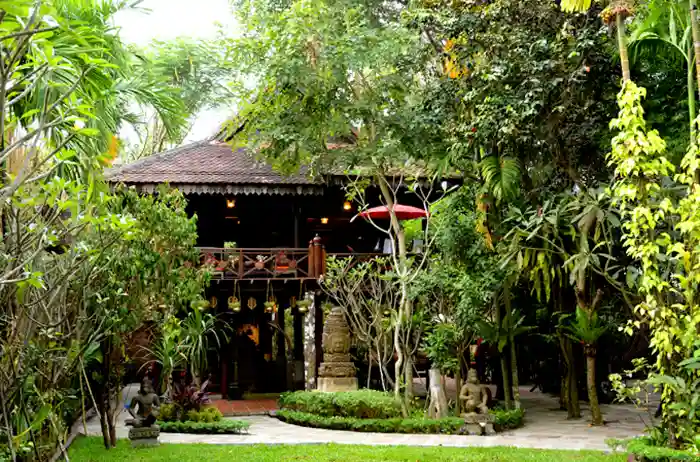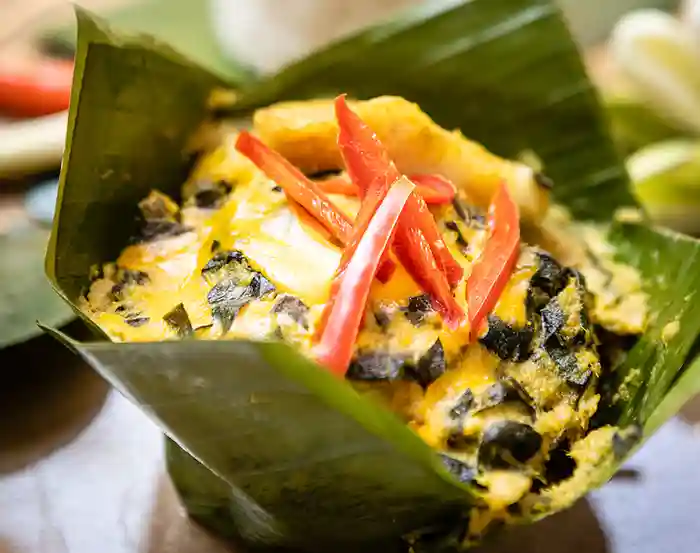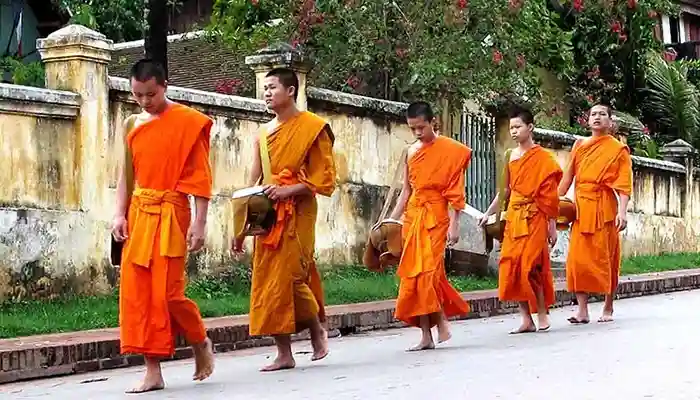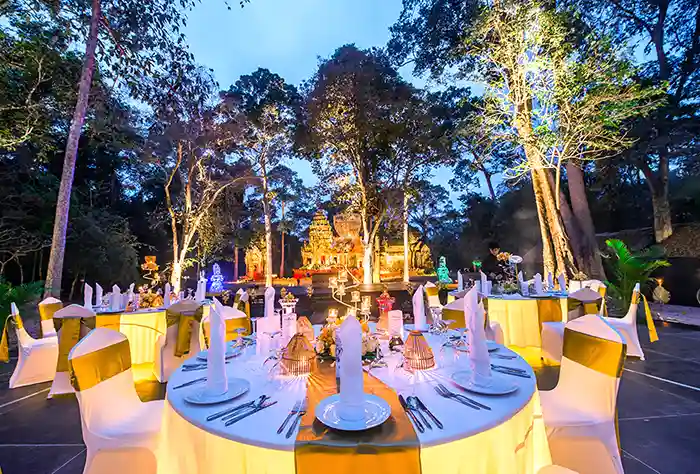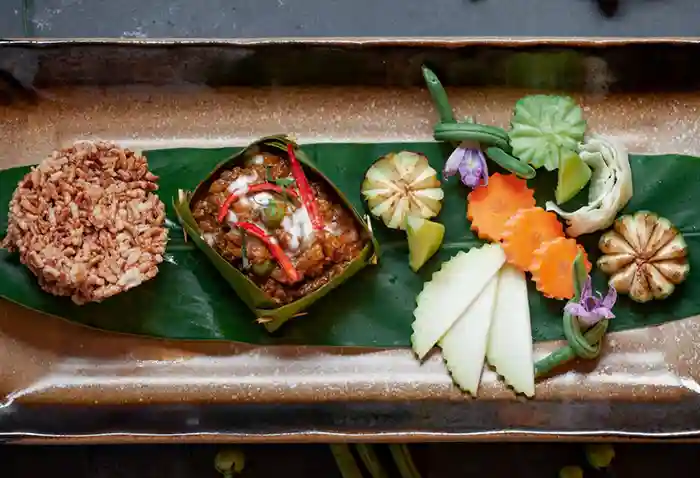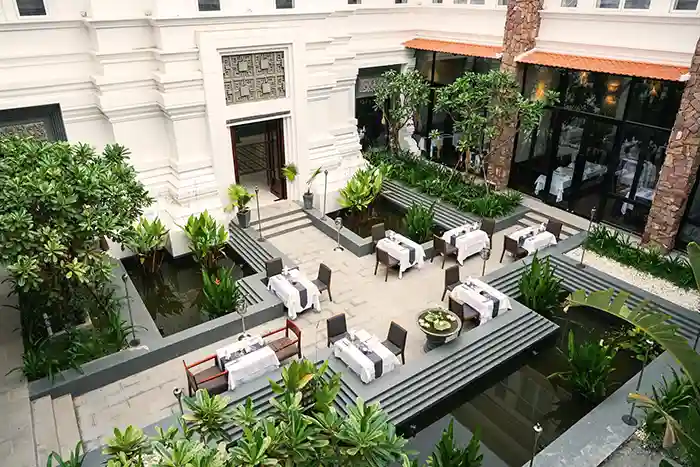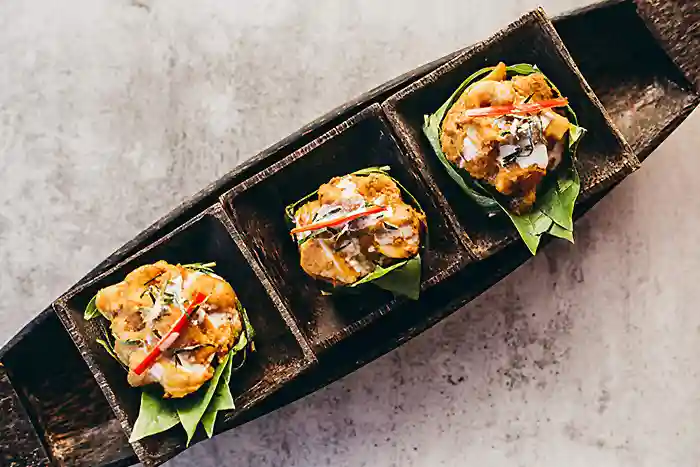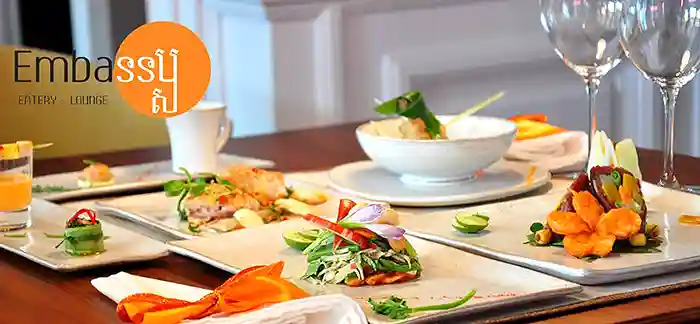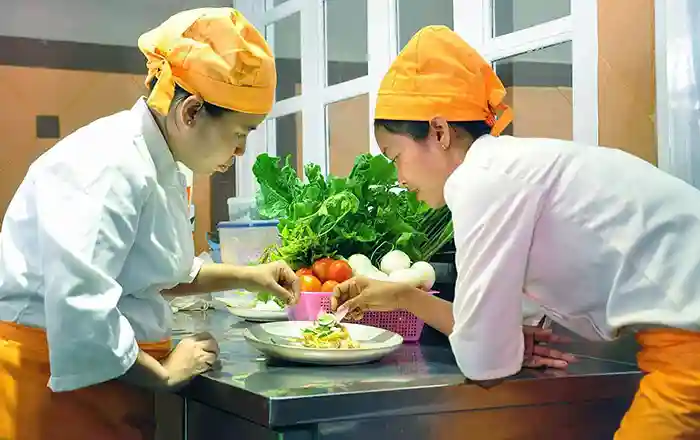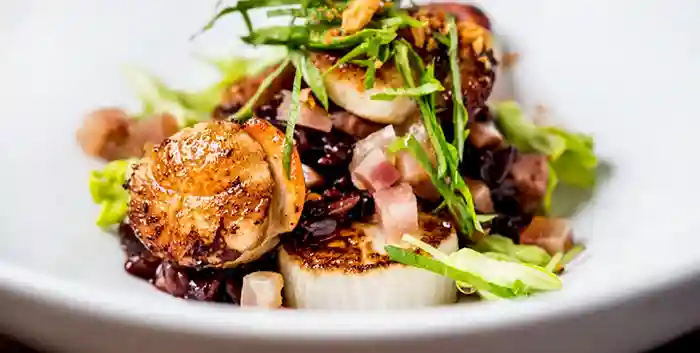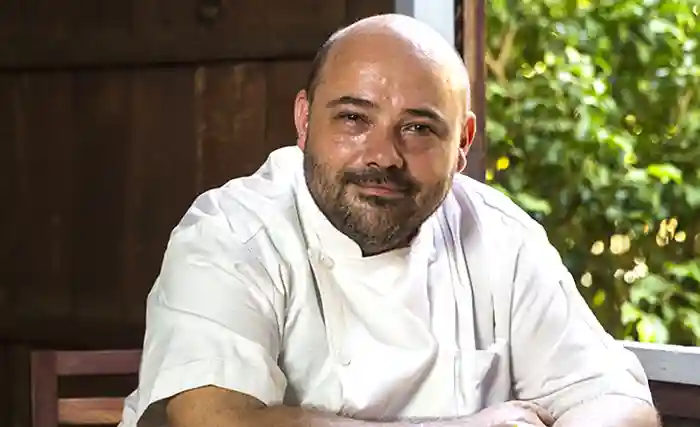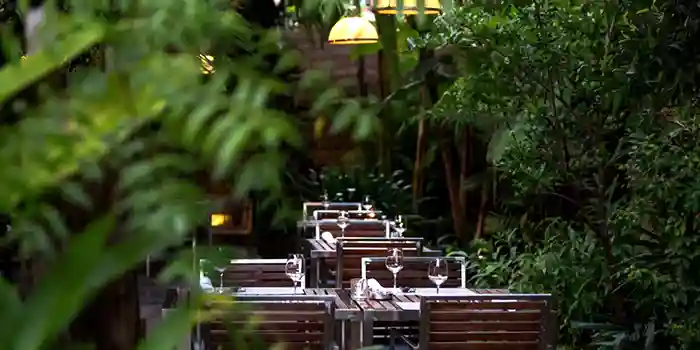Cambodian Cuisine
The glow of sunset fades from the courtyard of the rustic French villa, the last rays striking the tops of surrounding palms. The waiter has brought a bowl of bright yellow curry and the sharp scent of lemongrass rises reminding you of Thai and Vietnamese dishes, along with slices of a fresh baguette and skewers with a tangy paste called kroeung. An aromatic kaffir-flavored rice cooked in crab juice, stir-fried Chinese style with pungent Kampot peppercorns and a French-style crepe, though crispier and served with a pile of herbs and sauces, is also placed on the table. At the next table, you spot mango slices and other exotic fruits served within a white cream.
At the dining tables of Cambodia, taste the variety influences on Cambodian cuisine, from the complex flavors of traditional regal Khmer dishes to modern dishes. Discover the freshness of lake and seafood creations, including classic fish amok. Cambodian cuisine is experiencing a renaissance with modern Cambodian cooking pulling together all of these influences in world-class dining venues such as Cuisine Wat Damnak in Siem Reap. Immerse into Khmer cuisine with our personalized dining recommendations and arrangements, from mouth-watering street food to renowned temples of gastronomy, or for those with deeper interest, join iconic local chefs for interactive Khmer cooking classes.
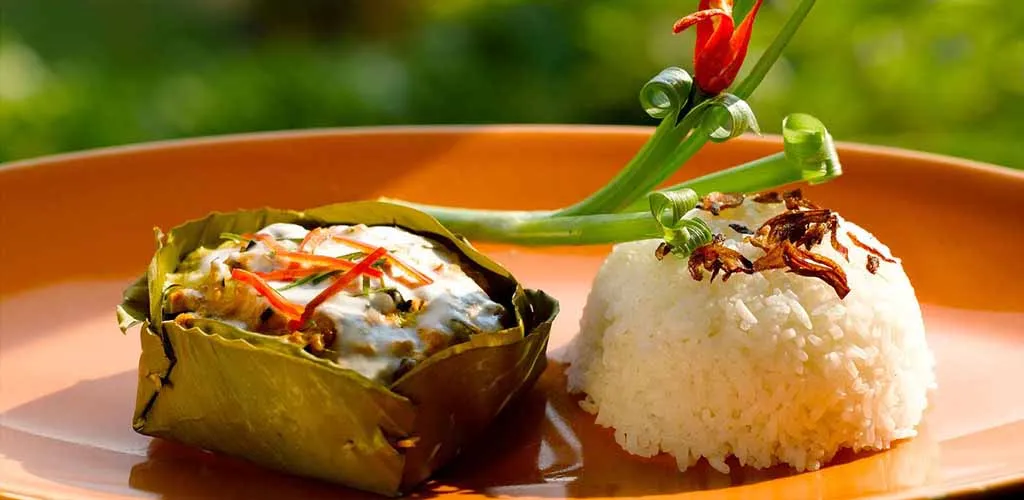
Cambodian Culinary Origins
Cambodian Herbs & Spices
Lemongrass—the grassy zesty herb is native to the region and while most commonly known for use in popular Thai dishes, such as green curry or Vietnamese favorites, such as Lemongrass Chicken (bun ga nuong), is an essential herb in Cambodian cuisine. Lemongrass can be dried and powdered, or used fresh, featuring a clean but mild citrus flavor that is subdued enough to build into in complex exotic flavors. Lemongrass is an essential component of Cambodian spice pastes, including yellow kroeung, which gets its color from the turmeric and lemongrass stems, and is used as a foundation in many classic Khmer and Cambodian dishes such as fish amok.
Kaffir lime and leaves—In Cambodia cooking, the rind of Kaffir fruit is used while very aromatic Kaffir lime leaves are also often used as a seasoning to provide a fresh citrus notes in many traditional dishes, especially in soups and curries. The leaves are also an essential ingredient in kroeung.
Kampot Pepper—Now widely known and exported, is a special cultivar of black pepper (piper nigrum) grown and produced in the Kampot Province, an area which offers perfect climate and soil conditions for growing the pepper. The pepper is used in Cambodia sauces and dishes such as stir fried crab and Cambodian beef salad.
Basil—Both Thai basil and Holy basil are used in Cambodia dishes with Thai basil being similar to Italian basil, but more pungent, savory, spicy, and anise-like. Thai basil is often used in soups and salads, mostly served as a side dish together with assorted green leaf herbs to add at the last moment like with Vietnamese dishes. Spicy and bitter Holy basil is used for cooking, such as with Khmer Stir Fry Pork.
Turmeric—Part of the ginger family and used in savory Cambodian dishes such as fish amok and curry, imparting a bright yellow color.
Tamarind— is a dark, sticky fruit used for souring, simmered in curries, stirred into drinks, made into sauces, and also reduced into a sweet and spicy dessert paste.
Galangal—often called "blue ginger," is a close cousin of ginger, but with a sharp citrus and pine flavor, used extensively in marinades, soups, and stir-fries. It's also another essential component pounded in a pestle with other herbs and spices to create kroeung paste.
Star anise—Aromatic native and popular in China and used in caramelized meats. Star anise has a slightly peppery scent that is also reminiscent of licorice and is used in Khmer curry and soups.
Cardamom—grows wild in the mountain range of the same name in southwest Cambodia.
Other common spices in Cambodian cooking include coriander, mint, garlic, cinnamon, cloves, cilantro, ginger and palm sugar.
Cambodia cuisine is less known than popular neighbors Thailand and Vietnam, but also features similar complex, bold and exotic flavors. Like much of Southeast Asia, Cambodia's cuisine has been influenced not only by these close neighbors during trade, war, and occupation, but also Indian traders who first traveled to the region in the 6th century, Chinese migrants, and most recently, French colonialists. Cambodian cuisine is a melding of indigenous plants and animals with classical European technique.
Because of the country's riches of waterways, including the Mekong, Sap and Bassac Rivers, not to mention a massive lake, Tonlé Sap, freshwater fish and prawns are especially popular in Cambodia cuisine—in addition to which plenty of fresh seafood is also available from the Gulf of Thailand.
A lasting French colonial influence means the Cambodians, like the Vietnamese, eat more bread than almost every other country in Asia—generally French-style baguettes but also buns and other baked goods, like the Vietnamese do. Red curry, for example, is often served with bread – another legacy of the French era. Cambodian cuisine also features fish sauce widely in soups, stir-fried cuisine, and as dippings as the Vietnamese do. Coconut milk is the main ingredient of many Khmer curries and desserts and curry dishes known as kari, reflects its ties to Indian cuisine.
In Phnom Penh and Siem Reap, you will find French restaurants featuring liberal use of Thai and Vietnamese sauces and dishes (sometimes more easily than you can find authentic Khmer food).
Cambodian Staples
And what is a typical Cambodian meal? Primarily, it consists of fried or steamed rice mixed with pieces of salted, dried, or cooked fish, seasoned with fresh chilies and/or garlic, often accompanied by a simple spicy or sour soup. Cambodian food staples are rice and fish, of course and, surprisingly for an Asian country, bread. In Khmer, niam nay is the phrase for eating—the real meaning, aptly, is "eating rice." Rice, like much of Asia, is paramount to Cambodia dining with almost every meal eaten with a bowl of rice. Cambodia has the regular aromatic rice, but also a delicious glutinous style that every traveler becomes quickly addicted to, commonly known as sticky rice.
Cambodian cuisine, though uniquely Khmer, has an often repeated generalization—which is nevertheless pretty accurate—likens Cambodian food to Thai food, but without the spiciness and curries. However, these are not completely absent and Khmer cuisine draws heavily on the traditions of its Thai, Vietnamese and Chinese neighbors and residents. To understand Khmer food, it is necessary to refer to the history. Once an Indianized kingdom located on the Mekong delta, in 1432, the civilization of "Kampuchea" widened its borders into Burma and Vietnam before the Vietnamese started to colonized the delta in the 18th century and Siam squeezed in from the west. It is in this historical setting that the Kampuchean kitchen is influenced by Thai, Vietnamese and indirectly, Chinese cooking.
Popular dishes include an sam chruk, a roll of sticky rice filled with soybean cake and chopped pork, and khao phoun, a noodle dish with a coconut sauce. Freshwater fish comes from Lake Tonle Sap; seafood is also found in the Gulf of Thailand at Sihanoukville. Fish comes grilled (trey aing), steamed whole (trey chorm boy), or fried with vegetables (trey chean neung spey). Somla machou banle is sour fish soup; somla machou bangkang is spicy prawn soup.
Special dishes not to miss include amok, which is fish in coconut, wrapped in a banana leaf. In former times, "royal Cambodian cuisine," known as Khmer cuisine, was developed in the service of the king are there are chefs in Cambodia who have mastered this culinary art, but restaurants serving this kind of food are rare. Many of the variety of herbs and spices used in Khmer cuisine were originally brought in by traders from India, almost two thousand years ago and is reflected primarily in Cambodia curry dishes.
A thousand years later, the Chinese brought noodles and introduced stir frying into Cambodian cooking. Conversely, during the ascendance of the Khmer Empire at Angkor, Cambodia dishes and culinary into Laos, Vietnam, and Indonesia, Thailand, greatly influencing the royal style of cooking in the latter. Spice pastes (kroeng) are also a main part of Cambodia cooking, with liberal use of the bold and salty fermented fish paste (prahok), and also palm sugar (khaw), as well as a wide variety of herbs (right). Like other Southeast Asian cuisines, Cambodian food is a balance of sweet, bitter, sour and salty flavors, although it’s markedly less spicy than Thai and Laotian food.
It's Like Thai, right?
Some Khmer dishes may remind you of Thailand. Indeed, contemporary Cambodian cuisine, including ubiquitous fish amok, sour fish soup, and coconut-based curries, are all very similar to central Thai cuisine, but less use sugar and chilies, and applying a greater use of other spices. Those shy of hotter Thai curries, which always contain chilies, will be happy in Cambodia where curries are milder and may not even have chilies and when used are a milder variety than used in Thailand.
Kampot Pepper - Old is new again
Kampot Pepper has become a prestige spice, but it's nothing new in history. The Chinese explorer Tcheou Ta Kouan wrote of Cambodian pepper cultivation as early as the 13th century during the Angkor period, noting peppers popular use in cooking, and later, found in Chinese villager and trader's records from the 1800s in Kampot area. During French Indochina period nearly a century long, by the 1920s almost all the pepper consumed in France—2,600 tons—comes from Indochina, with Kampot variety of unique flavor and strength made it the finest pepper in the world, the premier spice in the top kitchens in Paris.
Culinary Adventure in Cambodia
For fearless eaters and whom seek try anything once, what you've heard is true—Cambodia will meet you head-on with such specialty dishes as fried tarantula (below), cooked scorpions, and grilled snake. In country with decades of malnutrition insects provide a cheap but rich source of protein and nutrients. Cambodians favorite insects include spiders, crickets, ants, locusts, grasshopper, and roaches which are prepared by washing then dipped in flour to fry into a tempura or grill. Insects are popular street and markets food, but also in finer and luxury hotel restaurants.
For the timid, we recommend the unique and delicious chaa angrong sach ko—red ants stir fried with thin slices of beef, ginger, lemongrass, garlic, lemongrass, and shallots. A light sourness, secreted by the ants, compliments the beef. Fried tarantulas? They taste like chicken, of course.
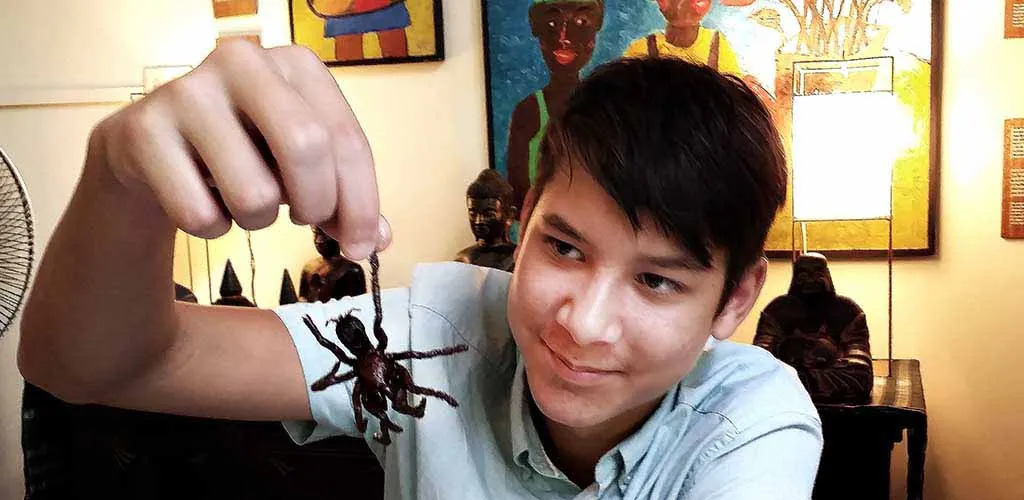
A Taste of Cambodia
Cambodia epitomizes our approach to exploring the treasures of cuisine. We think that food should be part of the everyday experience in every country you visit as it often most reflects its culture. The experiences layer on top of each other, food one element of learning about culture and history.
Even when the day’s focus is temples and sightseeing, we’ll have carefully planned out where to have lunch and dinner, before offering a range of delicious Khmer and Cambodian ethnic dining. Also see our culinary activities below, including cooking classes, or full tours focused on food.
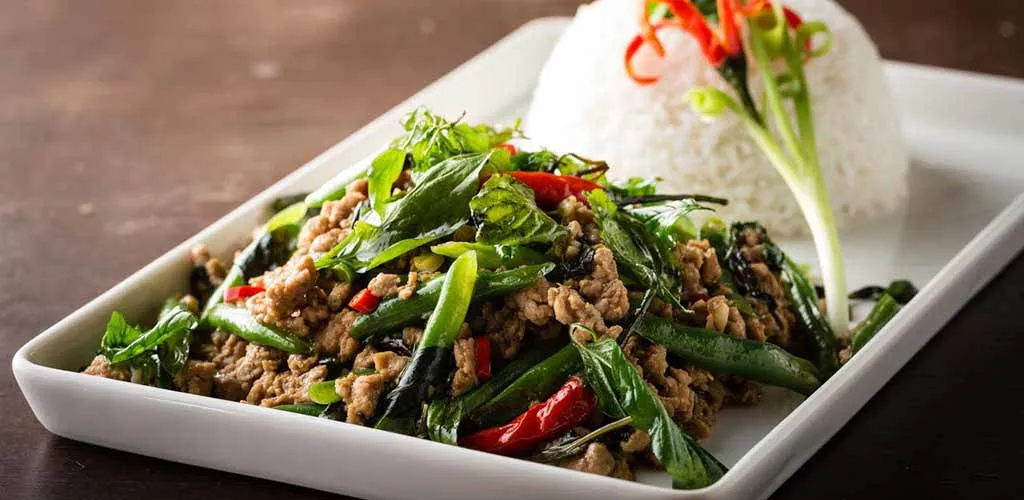
By custom, dinner is included with most hotels and we will arrange for at least your arrival day dinner for convenience. Let us know if you do not wish to have this inclusive to your Angkor trip. Don't underestimate your hotel's restaurants and cafes, especially if you are tired—some have the top restaurants in their respective locations, such as La Residence in Siem Reap and the Raffles in Phnom Penh, serving up tasty Cambodia dishes such as minced pork with sweet basil.
Cooking in Cambodia
Top Restaurants in Cambodia
Top Hotel Dining in Cambodia
Cambodia Cooking Classes
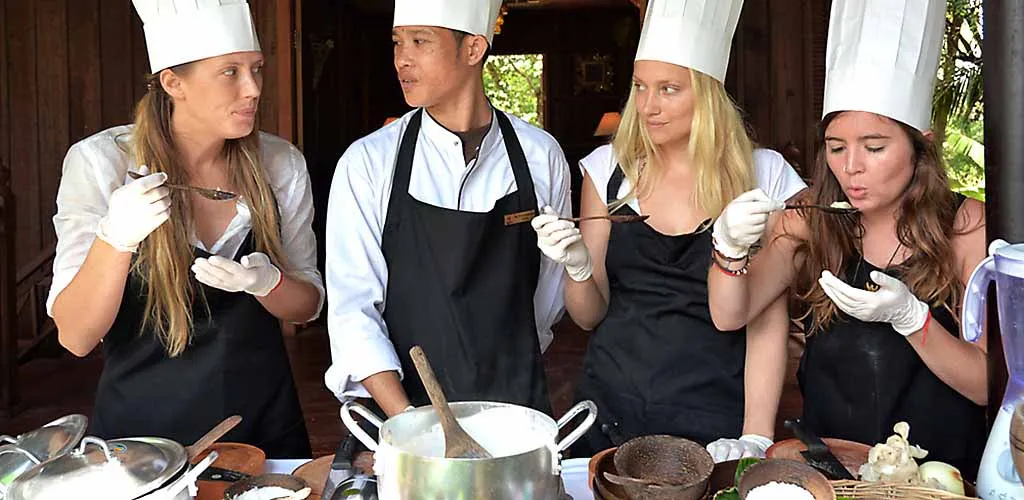
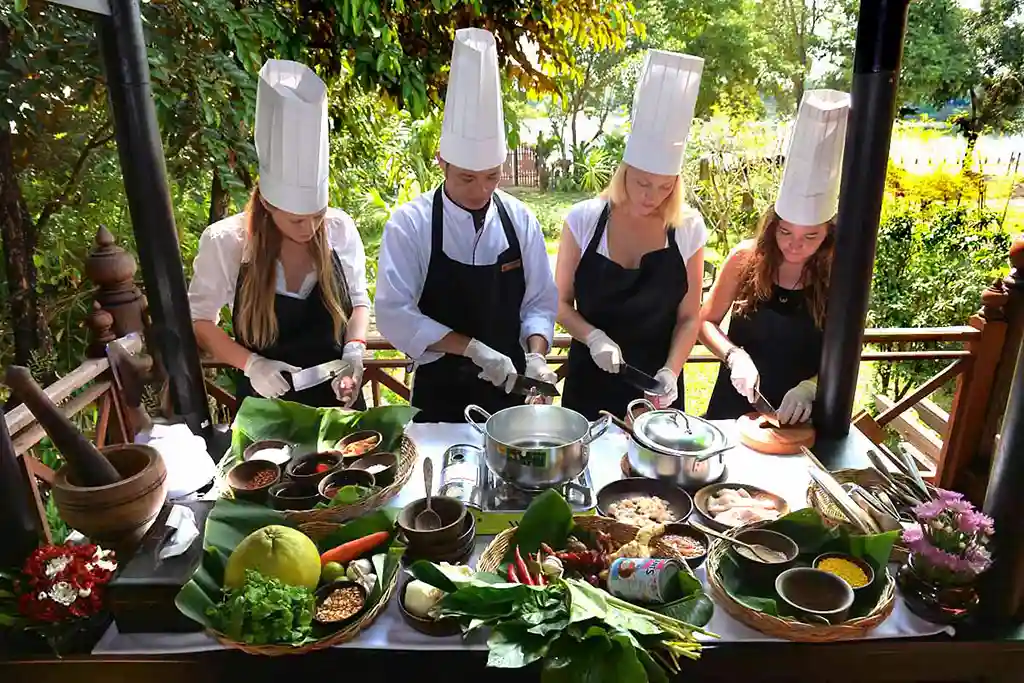
We can arrange a variety of cooking classes and activities that offer a delightful break from touring the temples, from preparing traditional Cambodian cuisine, visiting local farms and markets, cooking in a private sala (villa) within the temple complex (above), to visiting a local village for a private farm tour and lunch. If you're interested in learning more and our current dining recommendations for Siem Reap please contact us for our Cambodia dining list (updated each season).
It's not all about the temples—our Vietnam and Cambodia culinary and food tours have been organized for over twenty years. Discover why not only the legendary cuisine of Vietnam is a highlight when traveling there, but in Cambodia, with equally delicious street food and now, world-class fine dining. Contact us to arrange a private culinary-focused trip for you are your family or friends.

Atlas Obscura Modern Cambodia: Angkor Wat & Beyond
In addition to our private trips, we've been proud to launch and partner with Atlas Obscura to offer our one-of-kind culinary and cultural trips to Vietnam & Cambodia. This popular 9-day trip is the ultimate foodie adventure in Vietnam and Cambodia and takes in the most interesting of Cambodia's arts, crafts, culinary, nature, and of course, magnificent temples park.
